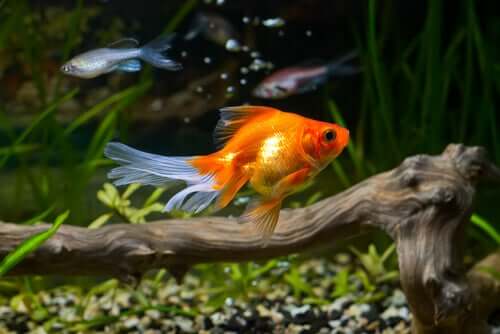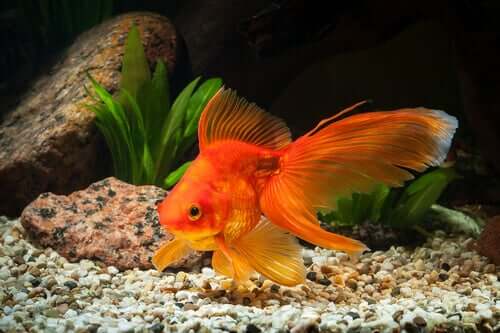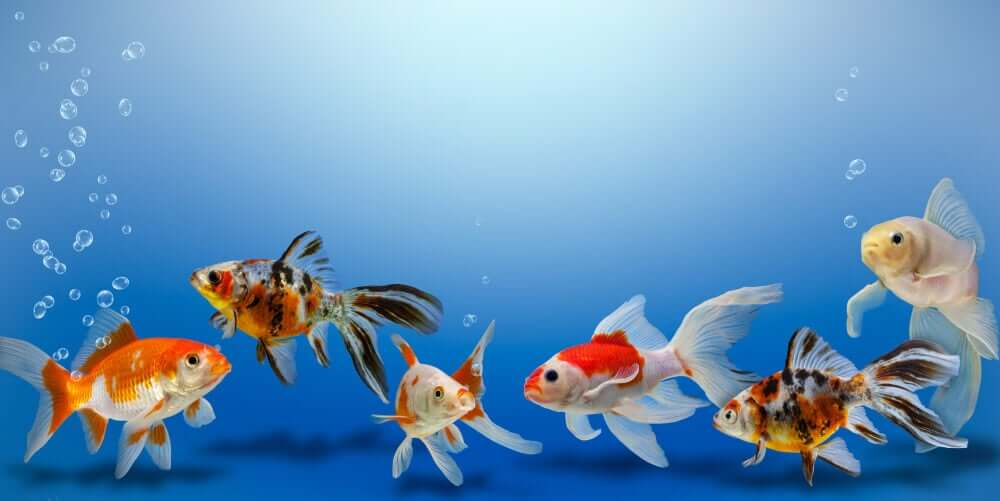Water Quality and the Survival of Goldfish

The goldfish is one of the easiest pets to cultivate, given its ability to reproduce, its adaptability to a variety of climates, and its resistance to different illnesses. They originated in Eastern Asia and became popular as ornamental fish centuries ago: first in Europe, and then around the world. In the following article, we’ll take a closer look at the relationship between water quality and the survival of goldfish.
What are goldfish like?
The most common varieties of goldfish measure between 6 and 12 inches long and weigh about 10.5 inches. However, in more natural conditions and larger areas, these animals can grow to be three times larger. Their bodies are short and oval-shaped, with long fins and a tail, making them excellent swimmers.
Goldfish are a fairly small member of the carp family and come in a variety of shades of orange, red, yellow, black, and white. Bright and shiny colors can be an indication of the state of a goldfish’s health.
These aquatic animals can live for quite a long time. In fact, if they receive the care they need, they can live for up to 5 or even 10 years. What’s more, some goldfish can survive for even more than a decade if they have a more natural environment. For example, in lakes or ponds.

The goldfish is a very resistant species
Goldfish are freshwater animals that can’t live in salty seas or oceans. In nature, goldfish prefer the shallow depths of lagoons and rivers with slow currents. What’s more, they adapt better when there’s an abundance of vegetation and the body of water where they live has a soft bottom. They tend to stay close to shore.
However, this species is able to survive in less favorable conditions. For example, in contaminated water or water with a low oxygen concentration, as well as in low temperatures. Under the same conditions, other fish species are unable to survive.
The survival of goldfish in water with a low oxygen concentration
The goldfish is a species that can survive periods of anoxia for several hours or days. In other words, they can survive for short periods of time in conditions where they have little to no oxygen. These animals possess biological mechanisms that reduce their energy demands in the case of unfavorable conditions such as low oxygen supply.
This process is known as metabolic depression and consists of reducing the animal’s body metabolism significantly. This way, goldfish need much less energy in order to stay alive. During the metabolic depression, these animals undergo a series of physiological changes:
- Their bodies produce approximately three times less heat
- Glucogen reserves in the liver and brain increase as an energy-producing molecule
- They don’t accumulate toxic metabolic waste products since their muscles turn lactic acid into ethanol and carbon dioxide so that they can excrete into the water through their gills
- Anaerobic glycolysis, a metabolic alternative for obtaining energy

The survival of goldfish in low temperatures
These types of small carp can resist very low temperatures, including ice-cold waters. This is thanks to a series of physiological mechanisms like those we mentioned above and their behavior during the winter season.
When temperatures drop, the goldfish can bury itself under the mud and survive for some time. It goes into a less active state but maintains enough brain activity to stay alert in its natural environment.
This animal’s particular metabolism, strong adaptability to its environment, and ability to reproduce and live a long life all make the goldfish a species that has spread its fins across the planet.
There are many cases of owners who “get tired” of caring for their goldfish and end up releasing them in parks and lakes. As a result, they grow without space restrictions and become a much more abundant species. And, given that the health of the goldfish doesn’t depend on very special characteristics, it has become a very typical species in our surroundings.
All cited sources were thoroughly reviewed by our team to ensure their quality, reliability, currency, and validity. The bibliography of this article was considered reliable and of academic or scientific accuracy.
- Marshall E. Ostrow. Pet Manual: Goldfish (Barron’s Complete Pet Owner’s Manuals), 2003.
- Carassius auratus (Linnaeus, 1758). Pez rojo.
- Volodymyr I. Lushchak, Ludmyla P. Lushchak, Alice A. Mota, and Marcelo Hermes-Lima. Oxidative stress and antioxidant defenses in goldfish Carassius auratus during anoxia and reoxygenation, 2001.
- Hill, Wyse y Anderson. Fisiología animal, 2006.